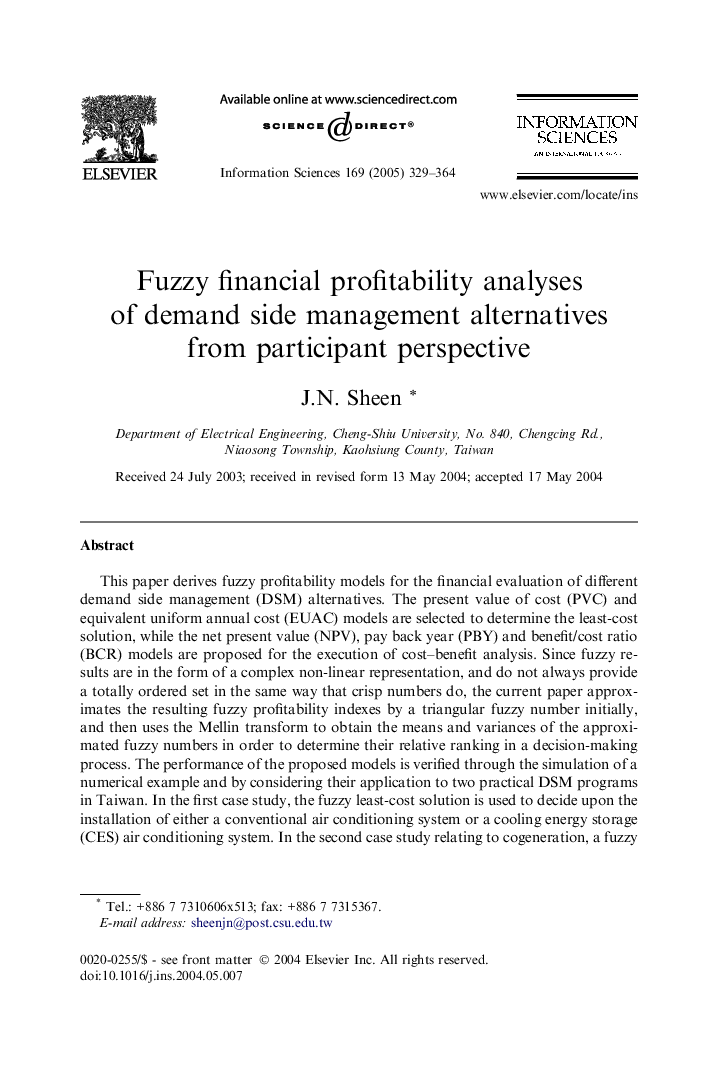| Article ID | Journal | Published Year | Pages | File Type |
|---|---|---|---|---|
| 9651073 | Information Sciences | 2005 | 36 Pages |
Abstract
This paper derives fuzzy profitability models for the financial evaluation of different demand side management (DSM) alternatives. The present value of cost (PVC) and equivalent uniform annual cost (EUAC) models are selected to determine the least-cost solution, while the net present value (NPV), pay back year (PBY) and benefit/cost ratio (BCR) models are proposed for the execution of cost-benefit analysis. Since fuzzy results are in the form of a complex non-linear representation, and do not always provide a totally ordered set in the same way that crisp numbers do, the current paper approximates the resulting fuzzy profitability indexes by a triangular fuzzy number initially, and then uses the Mellin transform to obtain the means and variances of the approximated fuzzy numbers in order to determine their relative ranking in a decision-making process. The performance of the proposed models is verified through the simulation of a numerical example and by considering their application to two practical DSM programs in Taiwan. In the first case study, the fuzzy least-cost solution is used to decide upon the installation of either a conventional air conditioning system or a cooling energy storage (CES) air conditioning system. In the second case study relating to cogeneration, a fuzzy cost-benefit analysis is applied to compare the relative profitabilities of an Extracted Condensing Steam Turbine Generator system and a Backpressure Steam Turbine Generator system. These investigations confirm not only that the results of the proposed fuzzy economic models are consistent with those of the conventional crisp models, but also demonstrate that the proposed methods represent readily implemented possibility analysis tools for use in the arena of uncertain financial decision-making.
Related Topics
Physical Sciences and Engineering
Computer Science
Artificial Intelligence
Authors
J.N. Sheen,
